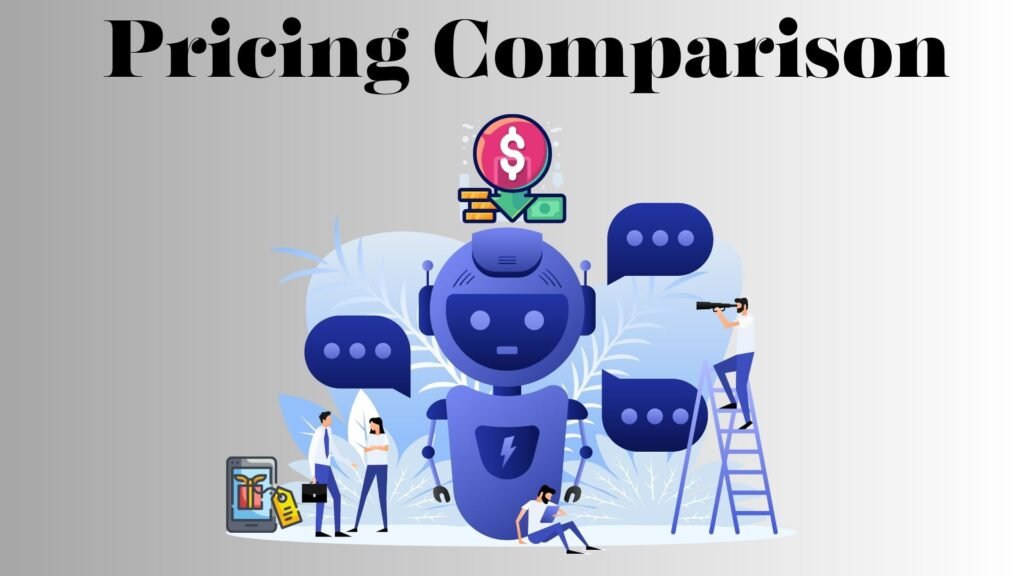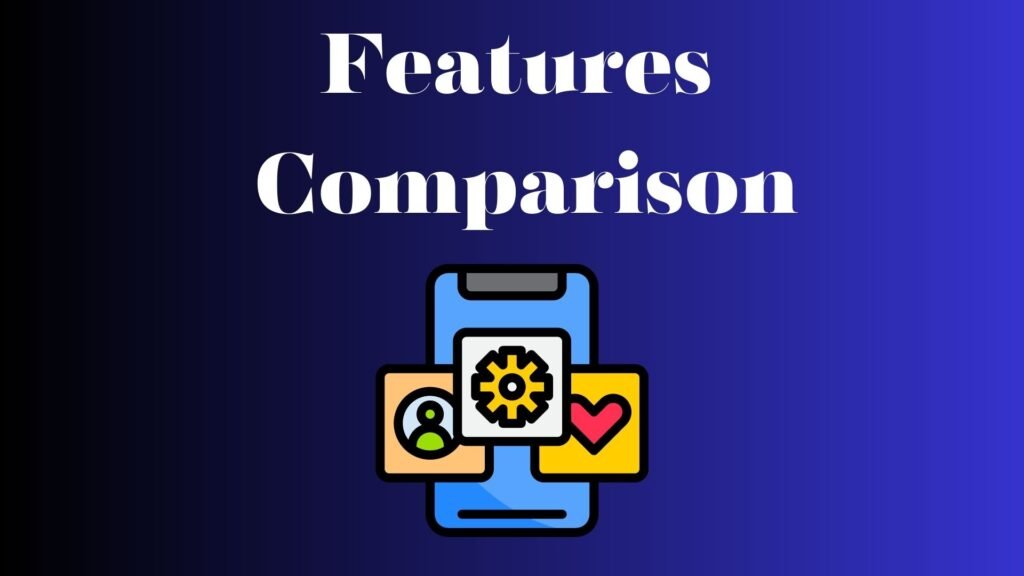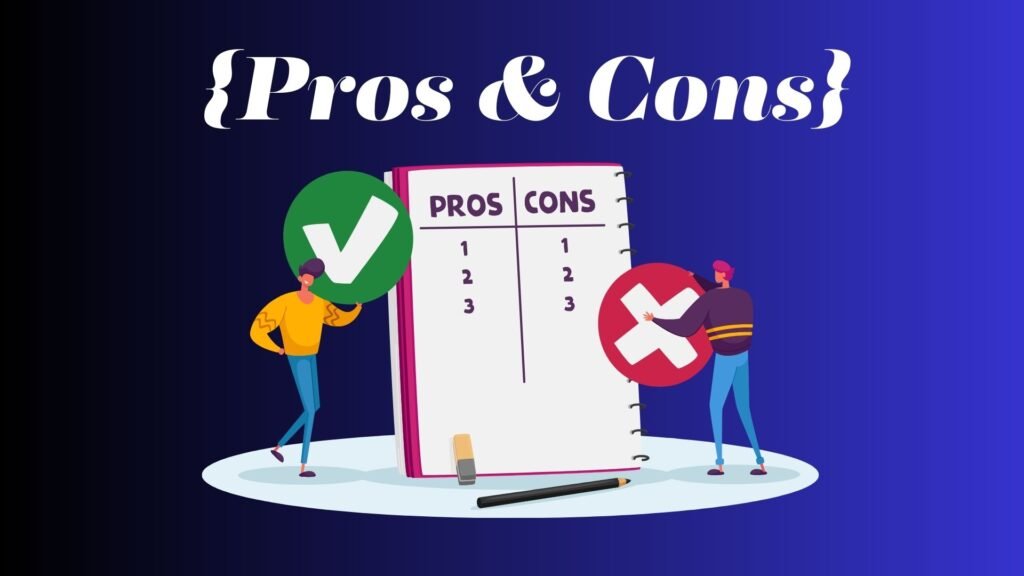In the digital marketing space, picking the right email marketing tool can make or break your business.
Today, we’re diving into an in-depth comparison: GetResponse vs TinyEmail. Buckle up, because we’re about to uncover the nitty-gritty of these two industry giants.
What is Email Marketing?

In case you’re new to the game, let’s quickly define email marketing. Simply put, it’s the use of email to promote products or services while developing relationships with potential customers or clients.
Tools like GetResponse and TinyEmail are critical for managing and optimizing these interactions.
When deciding which tool to use, the comparison of GetResponse vs TinyEmail becomes essential in making an informed decision.
GetResponse: The Email Marketing Veteran
Let’s start with GetResponse, a veteran in the email marketing space. Born in the late ’90s, GetResponse has had time to refine its features, boasting impressive email automation, landing pages, and even webinar hosting.
The key selling points of GetResponse include:
1. Email Marketing: GetResponse’s core feature, its email marketing tool, is robust and user-friendly. It offers a wide range of professional, customizable email templates and an easy-to-use editor.
2. Marketing Automation: Their automation workflows are intuitive and flexible, allowing for automation based on various customer behaviors.
3. Landing Pages & Webinars: These unique features set GetResponse apart. You can create stunning landing pages and host webinars directly on the platform—excellent tools for lead generation.
TinyEmail: The New Kid on the Block
On the other hand, we have TinyEmail, the new kid on the block. Despite being newer, TinyEmail has rapidly gained traction with its sensible pricing and incredible toolset.
Here are some of TinyEmail’s standout features:
1. Affordable Pricing: With plans starting free and scaling up based on usage, TinyEmail offers affordable solutions for businesses of all sizes.
2. Automation Emails: TinyEmail offers easy-to-use automation tools, allowing businesses to send timely, relevant emails to their subscribers.
3. AI Subject Line Assistant: This unique tool suggests optimized subject lines, helping your emails stand out in crowded inboxes.
GetResponse vs TinyEmail: Pricing Showdown

When it comes to pricing, both GetResponse and TinyEmail offer a range of options to suit different needs and budgets.
GetResponse has several plans, starting from Basic to Plus, Professional, and Max, each offering an increasing array of features. It’s not the cheapest tool out there, but the range of features you get is extensive.
TinyEmail, on the other hand, shines with its flexible pricing. It offers a free plan for up to 500 subscribers, with additional plans scaling based on the volume of emails sent.
GetResponse Pricing:
- Basic Plan: $15/month
- Email marketing
- Autoresponders
- Unlimited landing pages
- Sales funnels (1 funnel)
- Sell e-products
- Plus Plan: $49/month
- Everything in Basic
- Automation builder (5 workflows)
- Webinars (max 100 attendees)
- Contact scoring & tagging
- Sales funnels (5 funnels)
- Professional Plan: $99/month
- Everything in Plus
- Unlimited automation builder
- Paid webinars
- Webinars (max 300 attendees)
- Unlimited sales funnels
- On-demand webinars
- Max Plan: Custom Pricing
- Everything in Professional
- Transactional emails (paid add-on)
- Dedicated support
- Dedicated IP address
TinyEmail Pricing:
- Free Plan: $0/month
- 500 subscribers
- Forms & popups
- Automation emails
- AI subject line assistant (15/day)
- Limited sender identities
- Standard Plan: $15/month
- Everything in Free
- Unlimited subscribers
- Custom modules
- AI subject line assistant (45/day)
- Custom domain
- Pro Plan: $65/month
- Everything in Standard
- Unlimited prebuilt segments
- AI subject line assistant (Unlimited)
- Dedicated IP
- Priority support
- Enterprise Plan: Custom Pricing
- Everything in Pro
- Send billions of emails
- High-volume pricing
- Premium dedicated IP
- Enterprise-grade security
These prices and plans can change based on the companies’ policies and any active promotions, so always check their official websites for the most accurate, up-to-date information.
GetResponse vs TinyEmail: Features Face-off

Both GetResponse and TinyEmail are packed with features, but which tool offers more bang for your buck?
GetResponse shines with its advanced features like landing pages and webinars. Its automation workflows are also more robust, providing more options for customization.
TinyEmail, however, excels in its simplicity and affordability. While it might not have all the advanced features that GetResponse offers, it provides all the essentials, including email automation and a handy AI Subject Line Assistant.
GetResponse Features:
- Email Marketing: Newsletters, autoresponders, RSS to email, and transactional emails (paid add-on in Max Plan).
- Marketing Automation: Automation templates, cart abandonment emails, automation segmentation.
- Landing Pages: Mobile responsive, A/B testing, custom domain.
- Webinars: Up to 300 attendees (depending on the plan), screen sharing, polls, and chats.
- Conversion Funnel: Pre-built templates for sales, leads, webinars, and more.
- E-Commerce: Product catalog, order pages, online payments.
- Analytics and Reporting: Email ROI, per-user information, E-commerce tracking.
- Integration: Integration with popular tools like Shopify, WordPress, PayPal, and more.
TinyEmail Features:
- Email Marketing: AI subject line assistant, automation emails, limited sender identities (depending on the plan).
- Subscriber Management: Up to 500 subscribers in the free plan, unlimited in other plans.
- Forms & Popups: Collect data and generate leads with customizable forms and popups.
- Premium Templates: Access to premium templates to design interactive emails.
- AMP Data Services: Enhance emails with Accelerated Mobile Pages (AMP) data services.
- Segmentation: Predefined and custom segments for targeted marketing.
- Custom Domain: Available from the Standard Plan onwards.
- Enterprise Features: High-volume pricing, enhanced delivery, premium dedicated IP, API access (coming soon), and more in the Enterprise Plan.
Please remember to always check the official websites for the most accurate, up-to-date information on features, as they can evolve over time.
GetResponse vs TinyEmail: A User Experience Comparison

When it comes to choosing between GetResponse and TinyEmail, user experience plays a significant role. After all, the usability of the platform will directly affect your efficiency and productivity. Let’s dive into the user experience of both platforms.
GetResponse: User Experience
GetResponse is known for its intuitive and user-friendly interface. Even if you’re new to email marketing, you won’t find it difficult to navigate through the platform. The dashboard is clean and uncluttered, making it easy to find what you’re looking for.
From creating your first email campaign to setting up complex automation sequences, GetResponse simplifies the process with its drag-and-drop editor and visual workflow builder. Plus, its robust analytics tools present data in an easily digestible format, helping you make data-driven decisions with ease.
However, the sheer number of features offered by GetResponse can be overwhelming for beginners. It might take some time to explore and get comfortable with all the tools and functionalities.
TinyEmail: User Experience
TinyEmail, on the other hand, keeps things straightforward and minimalistic. It’s designed for businesses that prefer simplicity and efficiency over a wide array of features. The dashboard is straightforward, with clear navigation menus and quick access to key functions.
Creating emails and setting up automation is a breeze with TinyEmail’s user-friendly tools. The platform offers AI assistance in crafting subject lines, making it easier to create compelling emails. The segmentation features are also simple to use, enabling you to target your audience effectively.
However, the simplicity of TinyEmail might not appeal to everyone. If you’re looking for advanced features and functionalities, you might find TinyEmail lacking.
In the GetResponse vs TinyEmail debate, it boils down to what you value more – a comprehensive feature set with GetResponse or streamlined simplicity with TinyEmail. The good news is, both platforms offer free trials, allowing you to test the waters before making a decision.
Stay tuned for the next section where we will evaluate the customer support offered by GetResponse and TinyEmail.
GetResponse vs TinyEmail: Customer Support Examination

When it comes to customer support, the debate of GetResponse vs TinyEmail is certainly worth considering. Both platforms provide various channels to reach their customer service teams. Here’s how they stack up:
GetResponse: Customer Support
In the GetResponse vs TinyEmail debate, GetResponse’s customer support stands out in the following ways:
- 24/7 Support: GetResponse ensures assistance at any time, making it a reliable choice in the GetResponse vs TinyEmail comparison. No matter what time zone you’re operating in, you have help at your fingertips.
- Multichannel Support: GetResponse offers support via email, live chat, and phone, providing various avenues to seek help.
- Resource Library: The GetResponse self-help library is a treasure trove of articles, tutorials, and webinars. It’s a valuable resource when comparing GetResponse vs TinyEmail, especially for users who prefer self-service options.
TinyEmail: Customer Support
As a newer platform in the GetResponse vs TinyEmail match-up, TinyEmail offers impressive customer support:
- Business Hours Support: While TinyEmail doesn’t offer 24/7 support, their service hours are generous and align well with standard business operations.
- Email and Live Chat: Like GetResponse, TinyEmail provides assistance through email and live chat. It’s a point of parity in the GetResponse vs TinyEmail comparison.
- Knowledge Base: In the GetResponse vs TinyEmail comparison, TinyEmail’s detailed knowledge base is a strong advantage. It’s comprehensive, user-friendly, and continually updated.
When looking at GetResponse vs TinyEmail, both platforms show a strong commitment to customer support. GetResponse has an edge with 24/7 availability, while TinyEmail impresses with its evolving knowledge base.
In conclusion, the GetResponse vs TinyEmail decision hinges on your specific needs. Assess the platforms, try them out, and determine which one aligns best with your business requirements. In the GetResponse vs TinyEmail debate, it’s all about finding the right fit for you.
GetResponse vs TinyEmail: Pros and Cons

The GetResponse vs TinyEmail comparison wouldn’t be complete without an honest look at the pros and cons of both platforms. Let’s dive in:
GetResponse: Pros and Cons
Pros:
- Versatility: In the GetResponse vs TinyEmail debate, GetResponse shines with its array of features like email marketing, landing pages, webinars, and marketing automation.
- 24/7 Customer Support: As mentioned earlier, GetResponse’s 24/7 customer support is a major advantage in the GetResponse vs TinyEmail comparison.
- Extensive Integrations: GetResponse integrates seamlessly with various third-party applications, which is a plus point when considering GetResponse vs TinyEmail.
Cons:
- Learning Curve: Some users find GetResponse’s interface a bit complex. This is a noteworthy point in the GetResponse vs TinyEmail comparison for beginners.
- Limited Free Plan: Unlike TinyEmail, GetResponse doesn’t offer a free plan, which could be a deciding factor in the GetResponse vs TinyEmail decision for budget-conscious businesses.
TinyEmail: Pros and Cons
Pros:
- User-friendly Interface: TinyEmail’s interface is intuitive and easy to navigate, a definite advantage in the GetResponse vs TinyEmail comparison, especially for new users.
- Free Plan: The availability of a free plan makes TinyEmail an attractive option in the GetResponse vs TinyEmail comparison for small businesses or startups.
- Innovative Features: TinyEmail’s unique offerings like the AI subject line assistant give it an edge in the GetResponse vs TinyEmail match-up.
Cons:
- Limited Customer Support Hours: Unlike GetResponse, TinyEmail does not offer 24/7 customer support, a potential disadvantage in the GetResponse vs TinyEmail comparison.
- Fewer Integrations: TinyEmail does not offer as many third-party integrations as GetResponse, which could sway the GetResponse vs TinyEmail decision depending on your integration needs.
In sum, when considering GetResponse vs TinyEmail, both platforms have their strengths and weaknesses. It’s crucial to identify which features and services align best with your specific needs in the GetResponse vs TinyEmail debate.
Alternatives to GetResponse vs TinyEmail

Exploring alternatives is always a wise decision when considering your options, such as in the GetResponse vs TinyEmail decision. Here are a few notable alternatives:
Mailchimp: An Alternative to Consider in the GetResponse vs TinyEmail Discussion
Mailchimp is a popular email marketing platform known for its user-friendly interface and extensive features.
It offers a free plan, making it a potential contender in the GetResponse vs TinyEmail comparison for budget-conscious users.
However, its pricing can be high for advanced plans, which should be kept in mind when considering Mailchimp in the GetResponse vs TinyEmail decision.
SendinBlue: A Player in the GetResponse vs TinyEmail Game
SendinBlue offers a range of digital marketing tools, including email and SMS marketing, chat, CRM, and more.
Their pricing model is based on the number of emails sent, which can be an advantage or disadvantage in the GetResponse vs TinyEmail debate, depending on your usage.
ActiveCampaign: Adding to the GetResponse vs TinyEmail Mix
ActiveCampaign is well-known for its advanced automation features, making it a strong contender in the GetResponse vs TinyEmail comparison for users seeking sophisticated automation capabilities.
However, their pricing can be steep, especially for small businesses, which is a point to consider in the GetResponse vs TinyEmail discussion.
Constant Contact
In the arena of email marketing tools, another notable player is Constant Contact. It’s a platform that allows you to craft engaging emails and marketing campaigns, much like GetResponse and TinyEmail.
With a user-friendly interface, a robust range of features, and competitive pricing plans, Constant Contact holds its ground. Their customer support, which includes phone support, also stands out.
Offering a free trial, it provides a taste of what’s in store, making it a worthy alternative to consider in your GetResponse vs TinyEmail decision-making process.
In the end, while the GetResponse vs TinyEmail decision is crucial, it’s always beneficial to explore other options in the market.
Consider your business needs, budget, and growth plans when making your decision, whether it’s GetResponse, TinyEmail, or any other platform.
Check out our other Blogs: ChatGPT Prompts
Final Thoughts and Recommendations

Deciding between GetResponse and TinyEmail ultimately comes down to your business needs and preferences.
Both of these email marketing platforms offer a range of features, including user-friendly interfaces, marketing automation, and the ability to create beautiful emails.
GetResponse offers a comprehensive email marketing solution with advanced marketing campaigns capabilities.
If you need robust marketing automation tools, it might be the right choice for you.
Plus, their customer support, including phone support, is top-notch, ensuring you have help when you need it.
On the other hand, if you’re looking for a cost-effective email marketing tool with a free plan, TinyEmail could be a good fit.
They offer a drag-and-drop editor, making it easy to create email campaigns, and their pricing plans are flexible, scaling with your business.
Both platforms offer a free trial, so you could test out their features and see which one suits your needs better.
Alternatives to consider include MailChimp, Constant Contact, and SendinBlue, each offering its unique blend of features and pricing structures.
For instance, SendinBlue offers a free plan with unlimited contacts, which could be a deciding factor for some businesses.
In Conclusion
Ultimately, the choice between GetResponse and TinyEmail depends on your business size, budget, and email marketing goals.
Both are reliable platforms that can help you reach your target audience and convert leads into customers.
Remember, the right email marketing tool for you is the one that fits your needs best. So, don’t hesitate to take advantage of the free trials and explore what each platform has to offer. Happy emailing!
